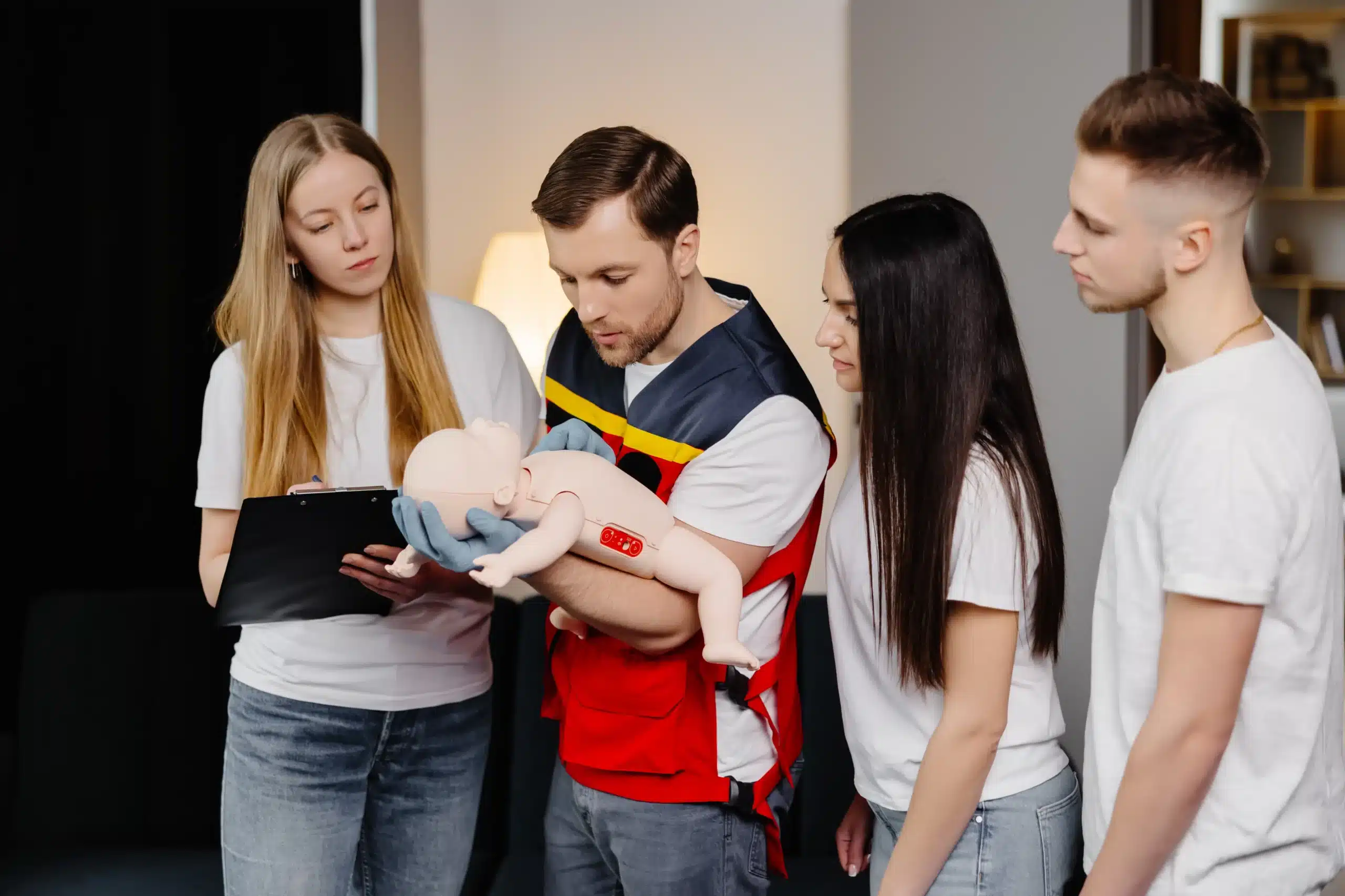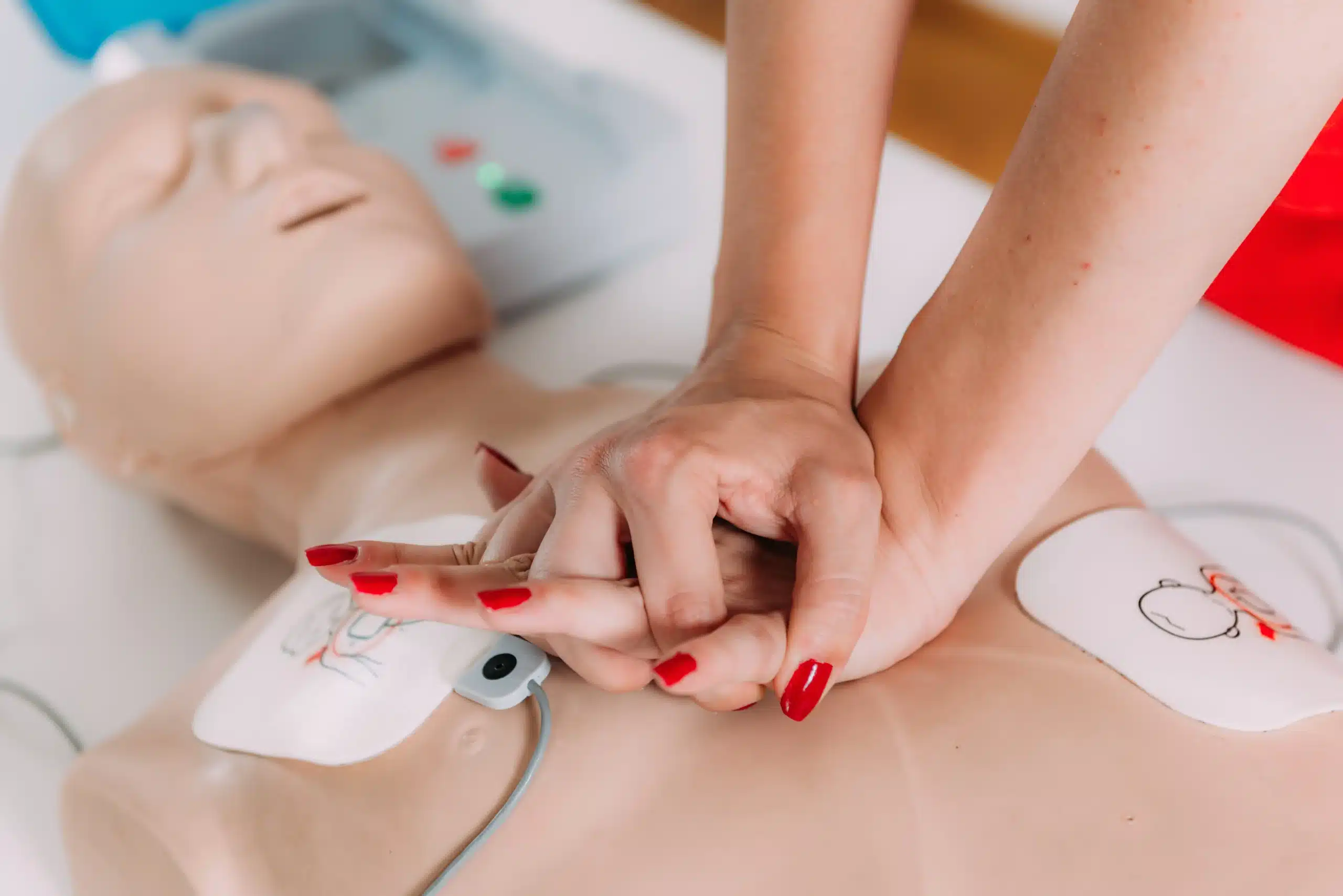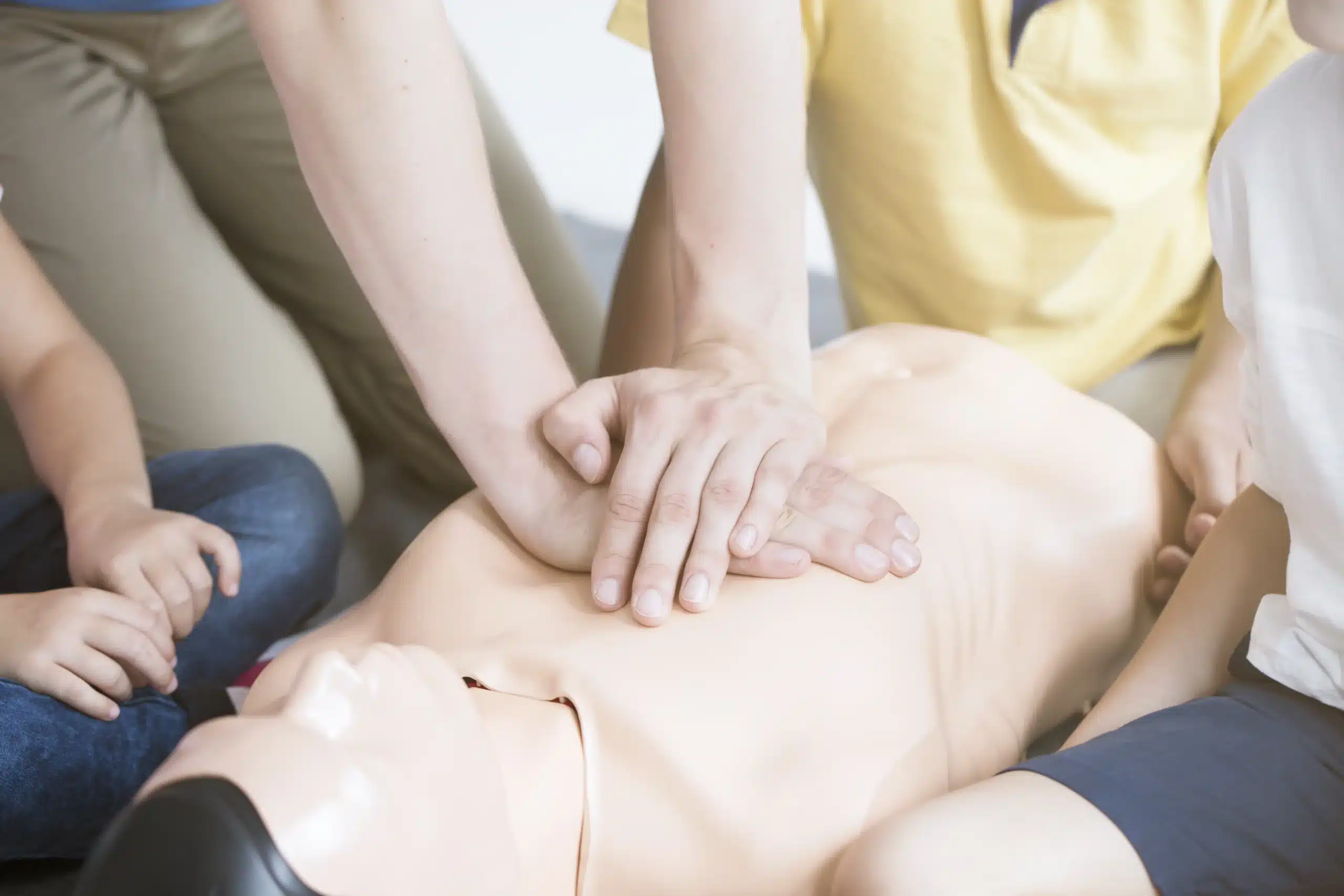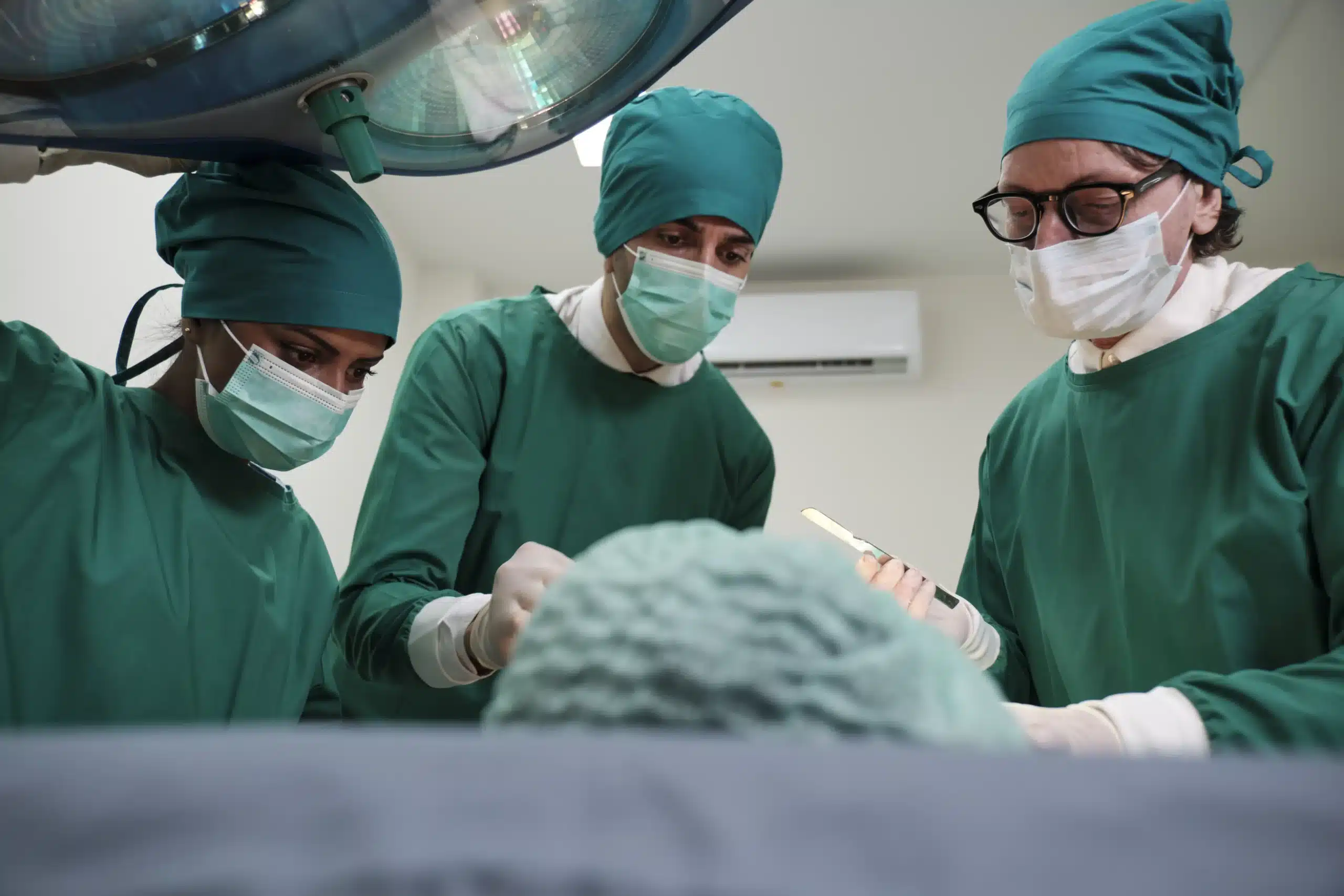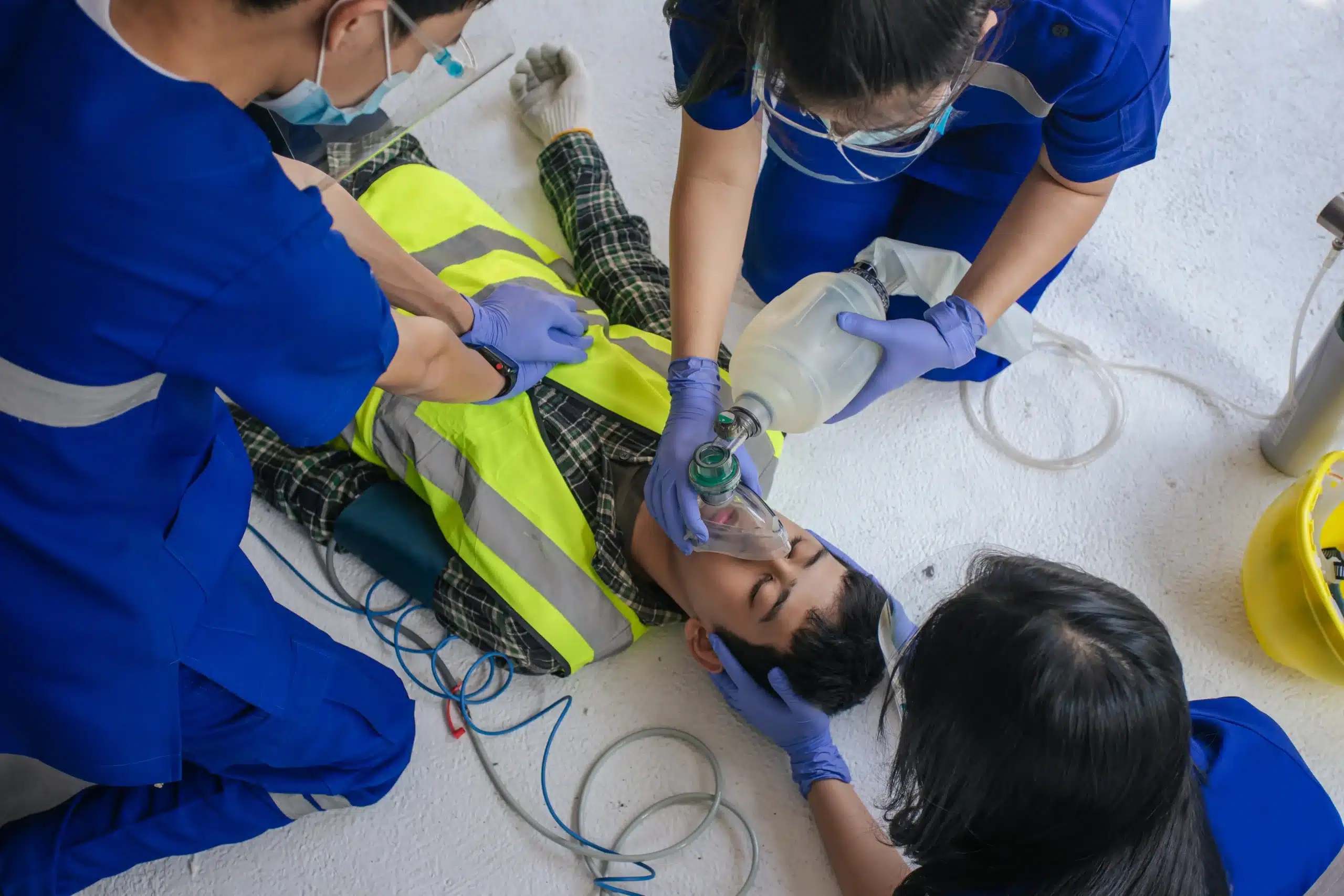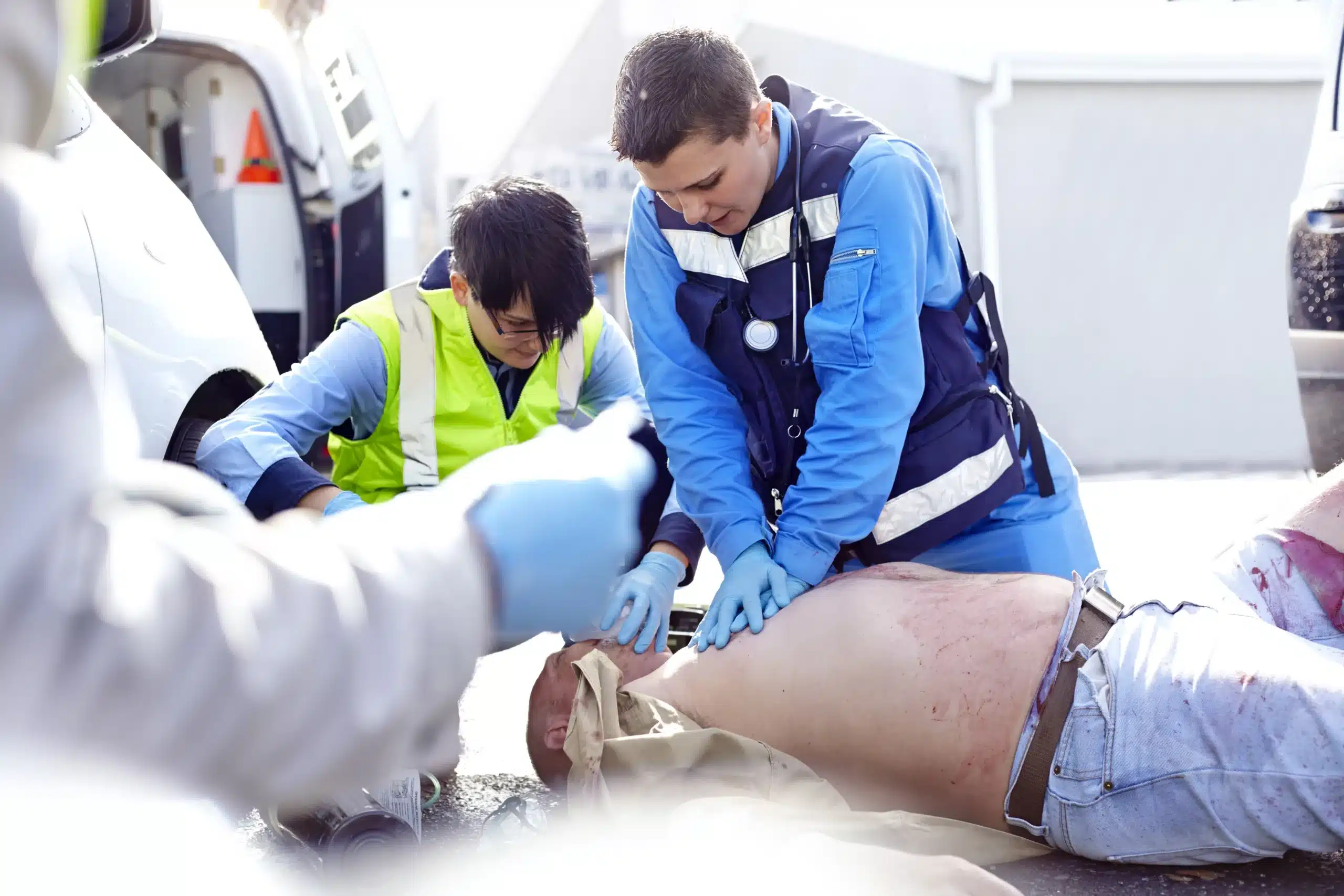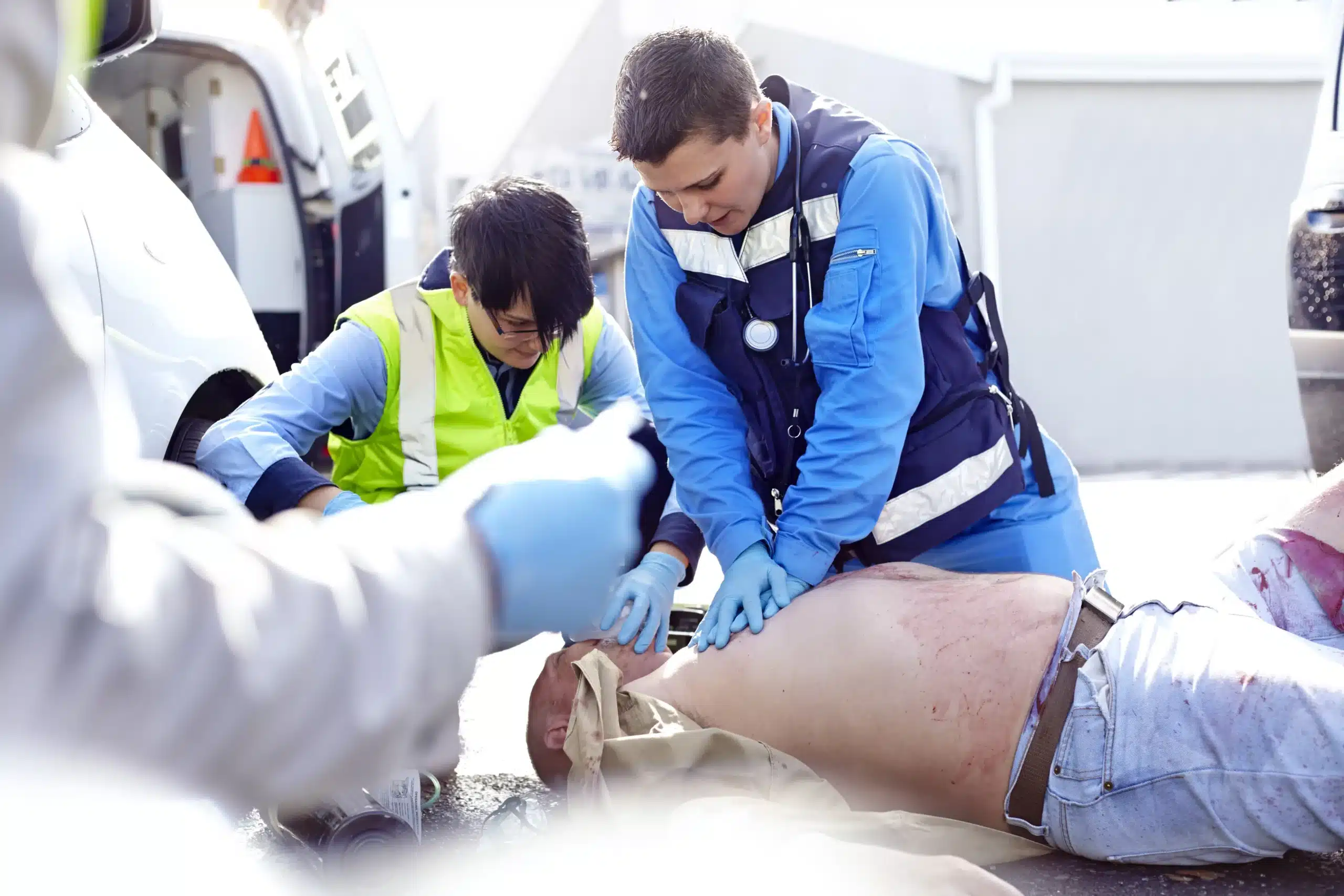Empowering yourself with life-saving skills is one of the most valuable things you can do, both for yourself and your community. CPR training equips you with the knowledge and confidence to respond effectively during medical emergencies, potentially saving a life. This guide will walk you through the essential aspects of CPR training, from finding “CPR courses near me” to understanding the different certification levels and choosing the right course for your needs. We’ll also cover what to expect during a CPR class, the costs involved, and how to maintain your certification and skills over time. Whether you’re a healthcare professional, a concerned parent, or simply someone who wants to be prepared, this guide will provide you with the information you need to get started.
Key Takeaways
- CPR skills save lives: Learning CPR, whether for personal or professional reasons, empowers you to respond effectively during emergencies. Explore the various levels of certification available to find the right fit.
- Find a reputable training center: Choose a provider accredited by a nationally recognized organization like the AHA. Consider factors such as instructor experience, available resources, and course schedules when making your decision.
- Stay prepared: Maintain your CPR skills through regular practice and renew your certification every two years. Staying up-to-date ensures you’re always ready to assist in a medical emergency.
Why CPR Training Matters
CPR training gives you the skills to respond effectively during medical emergencies. From healthcare professionals to everyday people, CPR certification empowers individuals to provide immediate assistance when it matters most. Learning CPR can truly make a difference in life-or-death situations.
For healthcare providers, CPR training is essential for maintaining high standards of patient care. It’s a core skill that can dramatically improve patient outcomes and reduce mortality rates. BLS certification is often a job requirement, ensuring medical personnel can respond swiftly and confidently to cardiac arrest and other emergencies. This preparedness creates a safer environment for both patients and staff. The ability to perform CPR effectively contributes to a more responsive and capable healthcare team.
But CPR training isn’t just for medical professionals; it’s a valuable skill for everyone. Knowing CPR can help you save the life of a loved one, a stranger, or even a pet. CPR and first-aid training gives you the confidence to step in during emergencies, potentially doubling or tripling a victim’s chance of survival. Even basic CPR knowledge can make a critical difference before professional help arrives. Consider taking a CPR course to gain these vital skills and contribute to a more prepared and responsive community. You’ll gain confidence and the ability to act quickly when every second counts.
CPR Courses Available Locally
Choosing the right CPR course depends on your needs and whether you need certification for work or personal reasons. Here’s a breakdown of common CPR courses available locally:
BLS for Healthcare Providers
The Basic Life Support (BLS) course is for healthcare professionals like doctors, nurses, paramedics, and other medical personnel. It covers core life-saving skills for adults, children, and infants, including CPR, using an AED, and relieving choking. BLS certification is often a job requirement for many healthcare positions and emphasizes teamwork and high-performance resuscitation techniques. Hayward CPR Classes offers AHA-certified BLS courses, focusing on convenient daily classes.
Heartsaver CPR AED
Heartsaver courses are geared toward the general public and those who need CPR and first aid knowledge for their jobs, such as teachers, childcare providers, and workplace responders. These courses cover essential life-saving techniques for adults, children, and infants, including CPR, AED use, and first aid basics. Heartsaver courses provide valuable skills, but they may not meet the requirements for healthcare professionals who need BLS certification. Heartsaver courses are generally more affordable than specialized certifications like BLS, ACLS, and PALS.
ACLS
Advanced Cardiovascular Life Support (ACLS) certification is an advanced course for healthcare providers who manage cardiopulmonary arrest or other cardiovascular emergencies. It builds upon the BLS foundation and covers topics like airway management, pharmacology, and ECG interpretation. ACLS certification is typically required for physicians, nurses, paramedics, and other healthcare professionals working in critical care settings. You can also find ACLS classes in Hayward through other providers.
PALS
Pediatric Advanced Life Support (PALS) certification focuses on the specialized skills needed to respond to life-threatening emergencies in infants and children. This course covers pediatric assessment, respiratory emergencies, and cardiac arrest management. PALS certification is essential for healthcare providers who work with children, including pediatricians, pediatric nurses, and EMTs. Hayward CPR Classes offers AHA-certified PALS courses along with other essential life support training.
Find and Register for Local CPR Courses
Finding the right CPR class is easier than you think. Whether you’re a healthcare professional needing BLS certification or a parent wanting to learn the basics of CPR, several paths can lead you to the perfect course.
Search Online
Start by searching online. A quick search for “CPR classes near me” typically reveals several options, from community centers and hospitals to dedicated training centers. Hayward offers various CPR and first-aid courses, from community-level training to advanced certifications like BLS, ACLS, and PALS. You can find comprehensive CPR/AED/First Aid classes with same-day certification through providers like the CPR Training Center. Reading online reviews can also offer insights into other students’ experiences.
Check Community Resources and Workplaces
Explore local resources such as community centers, fire departments, and recreation centers. These organizations often offer CPR courses at reasonable prices. Many workplaces, especially in healthcare, also provide on-site CPR training for their employees. Group discounts for BLS certification are often available, making training more affordable and convenient for teams. CPR training is a cornerstone of emergency response for healthcare providers, and ensuring comprehensive training can significantly improve patient outcomes.
Register for a Course
Once you’ve identified a few potential courses, compare their content, schedules, and costs. Hayward CPR Classes offers American Heart Association (AHA) certification courses, including BLS, ACLS, PALS, and CPR/First Aid. They prioritize convenient, daily classes in over 60 cities and offer competitive prices. When you’re ready, register for the course that best aligns with your schedule and requirements. Always double-check the certification type, as certain professions require specific credentials.
What to Expect in a CPR Course
Knowing what to expect can help you feel prepared and confident going into your CPR class. Here’s a general overview of what your training will involve:
Course Format and Duration
CPR and first-aid courses in Hayward cover a variety of certifications, from basic life support to more advanced training like BLS, ACLS, and PALS. Basic courses typically focus on essential CPR techniques and first aid for common injuries. Advanced courses delve into more complex scenarios and are often required for certain healthcare professionals. Course duration varies depending on the certification level. Basic CPR/AED certification can be completed in a few hours, while more comprehensive certifications might require a full day.
Skills Practice and Hands-on Training
CPR courses are highly interactive, emphasizing hands-on practice. You’ll learn to assess an emergency situation, perform chest compressions, give rescue breaths, and use an automated external defibrillator (AED). Instructors use mannequins to simulate real-life scenarios, allowing you to practice your skills in a safe environment. This hands-on training builds muscle memory and confidence, preparing you to respond effectively in a real emergency. You’ll also learn essential first-aid techniques for treating common injuries like burns, cuts, and sprains.
Certification Exam and Process
Most CPR courses include a written exam and a practical skills test. The written exam assesses your understanding of CPR principles and procedures. The practical test evaluates your ability to perform CPR and other life-saving techniques correctly. After successfully completing both components, you’ll receive your CPR certification. This certification is typically valid for two years, after which you’ll need a refresher course to stay current. Hayward CPR Classes offers convenient daily classes in over 60 cities, making it easy to find a course that fits your schedule. They also offer group discounts, a cost-effective option for workplaces or community groups.
CPR Course Costs
CPR certification is an investment in life-saving skills, and understanding the associated costs can help you plan for your training. Several factors influence the overall price, including the type of course, your location (Hayward, Union City, or San Leandro), and the training center you choose. Let’s break down the typical price ranges for different CPR courses.
Course Price Ranges
Basic CPR and first aid classes are generally the most budget-friendly options. More specialized certifications, such as the American Heart Association’s BLS, ACLS, and PALS, usually have higher price tags because of the advanced medical knowledge and skills required. For example, a BLS Provider class in Hayward typically costs around $70. Check with your chosen training center for the most up-to-date pricing.
Discounts and Special Offers
Many training centers offer discounts, especially for groups. This can be a smart choice for workplaces, community groups, or families training together. Hayward CPR Classes offers attractive group rates for BLS certification, making it more affordable to train your team. Also, look for other special promotions or discounts that might be available. RQI recertification programs can also offer a streamlined and potentially more affordable way to maintain your skills. Check out Hayward CPR Classes’ RQI classes for more information.
Financial Aid Options
While cost is a factor, it shouldn’t prevent you from learning CPR. If you’re concerned about the financial aspect, contact Hayward CPR Classes directly. They’re committed to providing affordable training and can offer guidance on potential financial assistance options or payment plans. Remember, being CPR certified empowers you to make a real difference.
Choose a Reputable CPR Trainer
Finding the right CPR trainer is crucial for a valuable learning experience. Here’s what to consider:
Accreditation and Certification
A reputable CPR training provider should be accredited by a nationally recognized organization like the American Heart Association (AHA) or the American Red Cross. This accreditation ensures the course content meets established standards and guidelines. CPR training is fundamental for healthcare providers, and proper certification can significantly reduce mortality rates in healthcare settings. Look for providers offering certifications recognized by your workplace or licensing board. Hayward CPR Classes offers AHA-certified courses, ensuring you receive high-quality training.
Instructor Qualifications
Experienced and certified instructors are essential for effective CPR training. Instructors should possess current certifications and demonstrate a strong understanding of CPR techniques. Ask about the instructors’ experience and qualifications before signing up for a course.
Course Resources and Materials
Comprehensive resources and up-to-date materials enhance the learning process. Many providers offer online resources, such as videos and practice tests, to reinforce key concepts. Check if the course includes access to manuals, online learning platforms, or other supplementary materials. Hayward CPR Classes provides various resources to help students master CPR techniques.
Major CPR Training Providers
Several nationally recognized organizations offer CPR training programs. Understanding the differences can help you choose the best fit.
American Heart Association
The American Heart Association (AHA) is a leading provider of CPR and other lifesaving courses. They offer a range of courses, from basic CPR to advanced certifications like ACLS and PALS. Hayward CPR Classes is an AHA Training Center, providing access to their comprehensive curriculum and certification.
American Red Cross
The American Red Cross is another well-known provider of CPR training. They offer various courses tailored to different needs, including courses for healthcare providers and the general public. The Red Cross regularly updates its guidelines, and many training providers incorporate these updates into their courses.
National Safety Council
The National Safety Council offers a variety of safety training programs, including CPR and first aid. They provide resources and training materials for individuals and workplaces. You can find NSC-certified courses through various training centers. Safety Training Seminars provides CPR courses in Hayward.
American Safety & Health Institute (ASHI)
ASHI offers CPR, first aid, and other safety training programs. They provide certification courses and resources for individuals and organizations. Several training providers offer ASHI-certified courses.
Online vs. In-Person CPR Training
Choosing between online and in-person CPR training often comes down to your learning style, schedule, and employer requirements. Both formats have their own advantages, so understanding the pros and cons of each can help you make an informed decision.
Advantages of Each Format
Online CPR training offers unmatched convenience and accessibility. It’s a flexible option for people with busy schedules or limited access to in-person classes. You can learn at your own pace, whenever and wherever you have time. However, it’s essential to ensure the online certification comes from a reputable organization accredited by the American Heart Association (AHA) or a similar organization to ensure it’s valid. While online training offers flexibility, double-check if your workplace accepts online certifications, as some employers require in-person training.
In-person CPR training provides a structured learning environment with direct interaction with a certified instructor. This format allows for immediate feedback, personalized guidance, and hands-on practice with mannequins and other equipment. The chance to ask questions and practice skills in real-time can be invaluable for building confidence and competence. In-person training often covers a wider range of scenarios and allows for more detailed discussions. In-person classes are a great fit for kinesthetic learners who learn best through hands-on experience.
Blended Learning
Blended learning offers a practical alternative, combining online learning’s flexibility with the advantages of hands-on practice. This hybrid approach lets you complete the cognitive portion of the course online at your own pace, then attend an in-person skills session to practice and demonstrate what you’ve learned. Blended learning ensures you meet professional licensing and OSHA requirements while still offering the convenience of online learning. This format gives you the best of both worlds—theoretical knowledge and practical application. It works particularly well for those who want a more flexible learning schedule but also understand the importance of hands-on training to master essential CPR skills.
Prepare for Your CPR Course
Getting ready for your CPR class involves a little bit of prep work. Knowing what to expect—and showing up prepared—will make your learning experience smoother and more effective.
What to Bring
CPR classes are mostly hands-on, so comfortable clothing is key. You’ll be moving around and practicing on mannequins, so skip the restrictive outfits and dress for ease of movement. A notebook and pen can be helpful for jotting down notes, though many courses provide materials. Bring a water bottle to stay hydrated, especially during longer sessions.
Pre-course Study
While not always mandatory, pre-course study can give you a head start. Many providers, like Hayward CPR Classes, offer helpful online resources such as videos and study guides. Reviewing these materials beforehand can familiarize you with key concepts and techniques, allowing you to focus on the practical skills during the in-person training. Even a quick overview of basic CPR and first aid can be beneficial.
Physical Prep
CPR can be moderately physical, involving kneeling, bending, and performing chest compressions. While you don’t need to be an athlete, a basic level of fitness is helpful. If you have any physical limitations or concerns, it’s always a good idea to discuss them with your instructor beforehand. They can offer modifications or suggestions to ensure your comfort and successful participation. Being physically prepared ensures you can fully engage in the hands-on practice, which is crucial for mastering these lifesaving skills.
Maintain Your CPR Skills
CPR is a lifesaving skill, but certifications expire. Staying current with your training ensures you’re always prepared to respond effectively in a crisis. Regularly refreshing your skills can truly make a difference in the outcome of an emergency.
Certification Renewal
CPR certifications, like those from the American Heart Association, typically expire every two years. This renewal requirement is crucial for keeping your skills sharp and up-to-date with the latest guidelines. Healthcare providers, in particular, understand the importance of regular CPR training to enhance their emergency response capabilities and improve patient outcomes, as highlighted by CPR Classes Near Me. Proficiency in these life-saving techniques ensures healthcare professionals are always ready, as Safety Training Seminars points out. Once you successfully complete your renewal course and exam, you’ll receive a new certification card, demonstrating your continued commitment to providing high-quality care. Check with your employer or certifying organization for specific renewal requirements. CPR Care offers additional insights into the certification process for healthcare professionals.
Skill Maintenance Tips
Even if your certification isn’t due for renewal, consistent practice is key to maintaining muscle memory and confidence. Consider these tips to keep your CPR skills honed:
- Regular Refreshers: Take advantage of opportunities to review CPR guidelines and techniques. Even brief reviews can significantly reinforce your knowledge. This proactive approach ensures you’re always prepared to respond quickly and effectively, ultimately increasing a person’s chances of survival during a cardiac emergency, as emphasized by CPR Classes Near Me.
- Hands-on Practice: Whenever possible, practice chest compressions and rescue breaths on a CPR manikin. This hands-on practice helps maintain muscle memory and reinforces proper technique. As MyCPRCertificationOnline notes, even seasoned healthcare providers benefit from refreshing their skills and knowledge. Remember, immediate action can dramatically impact someone’s chances of survival, as highlighted by San Francisco CPR.
- Stay Updated: CPR guidelines can evolve. Stay informed about any updates or changes by checking the American Heart Association website or other reputable sources. This ensures you’re always using the most effective techniques.
By prioritizing skill maintenance and certification renewal, you contribute to a safer environment for everyone. Your preparedness can make all the difference in a critical situation.
Local CPR Training’s Impact
CPR training has a ripple effect, impacting individuals, workplaces, and entire communities. From personal preparedness to professional growth and overall safety improvements, the benefits of local CPR training are far-reaching.
Personal Emergency Preparedness
CPR training empowers you to respond effectively during medical emergencies. Equipping yourself with these skills allows you to provide immediate assistance to loved ones, colleagues, or even strangers in critical situations. Think of it as a vital life skill, similar to knowing how to change a tire or cook a basic meal. It’s a skill you hope you never need, but one that can make all the difference when seconds count. For more local information, see our guide to CPR training in Hayward.
Professional Development
For many professions, CPR certification is a job requirement and a valuable asset. Healthcare providers, teachers, coaches, and childcare professionals, among others, benefit from CPR training. It enhances their ability to respond to emergencies and provide a higher standard of care. Proficiency in CPR demonstrates a commitment to safety and professionalism, increasing your value in the workplace. To learn more, check out this article on why CPR is critical in healthcare.
Community Safety Benefits
Widespread CPR training creates safer communities. When more people are trained, the likelihood of a bystander knowing CPR during a medical crisis increases. This can significantly improve survival rates, especially for cardiac arrest victims. CPR-trained individuals become immediate responders, bridging the gap until professional medical help arrives. Learn more about the importance of CPR training in healthcare settings. This collective preparedness strengthens community resilience and fosters a culture of proactive safety.
Related Articles
- Why CPR is Crucial in Healthcare – CPR and First-Aid Training
- CPR Training in Hayward: Your Guide – Hayward CPR Classes
- Online CPR Classes in Union City: Your Complete Guide – Hayward CPR Classes
- CPR Certification in Union City: Your Guide – Hayward CPR Classes
- CPR Courses in Hayward: Find the Right Class for You – Hayward CPR Classes
Frequently Asked Questions
How do I choose the right CPR class for me? The best CPR class depends on your specific needs. If you’re a healthcare professional, you’ll likely need BLS, ACLS, or PALS certification. For most others, a Heartsaver CPR/AED course is a good choice. Consider whether you need certification for your job or personal knowledge when making your decision. If you’re unsure, contact Hayward CPR Classes directly; they can help you find the right fit.
What can I expect during a CPR class? Expect a combination of instruction, demonstrations, and hands-on practice. You’ll learn the steps of CPR, how to use an AED, and basic first aid. Classes are interactive, with plenty of opportunities to practice on mannequins. There’s typically a written exam and a skills test to ensure you’ve mastered the techniques.
How much does CPR certification cost? Costs vary depending on the type of course and the training center. Basic CPR classes are generally more affordable than advanced certifications like BLS or ACLS. Hayward CPR Classes offers competitive pricing and group discounts, so it’s worth checking their website or contacting them for specific pricing information. They may also have information on financial assistance options.
How often do I need to renew my CPR certification? Most CPR certifications are valid for two years. To maintain your skills and stay up-to-date with the latest guidelines, you’ll need to take a renewal course before your certification expires. Check with your employer or certifying organization for specific requirements.
What if I have physical limitations? Can I still take a CPR class? Absolutely. If you have any physical limitations, discuss them with your instructor before the class. They can often offer modifications or suggestions to ensure you can participate comfortably and successfully. The goal is to empower everyone with these life-saving skills, regardless of physical abilities.
